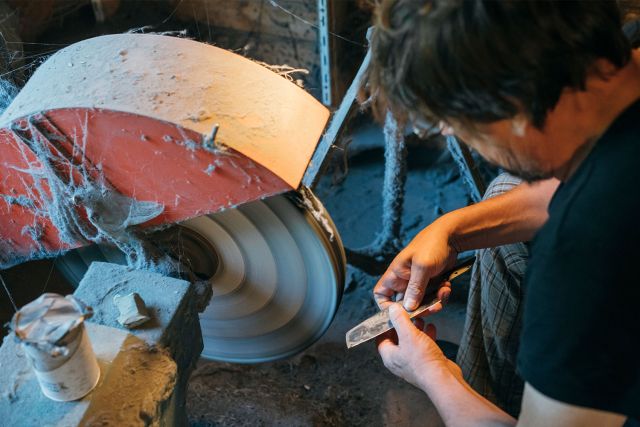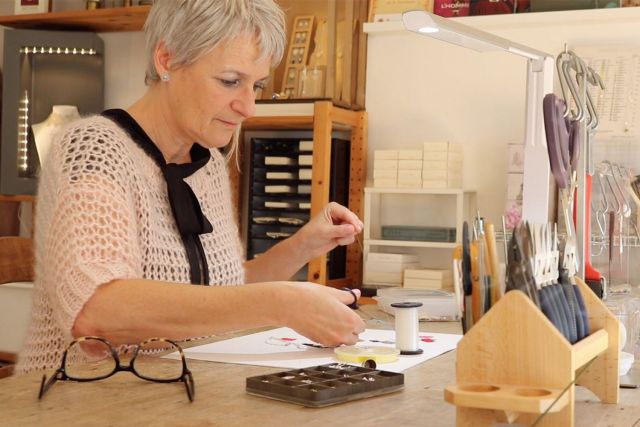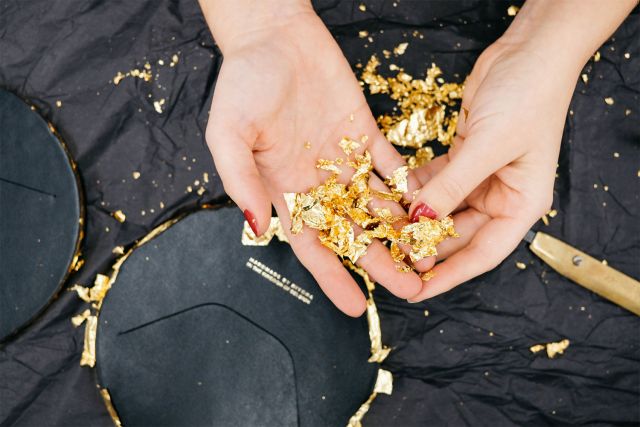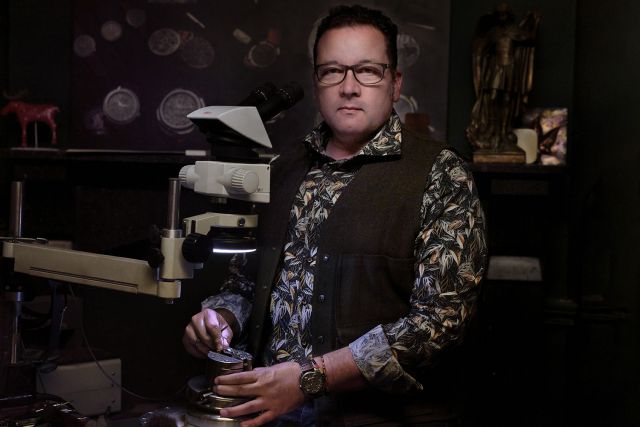The handle of this Damascus steel knife is fashioned from brown maple burl that has been stabilised to increase resistance. To obtain the Damascus leaf for his blades, Antoine melts two types of steel together.
Length 275 mm
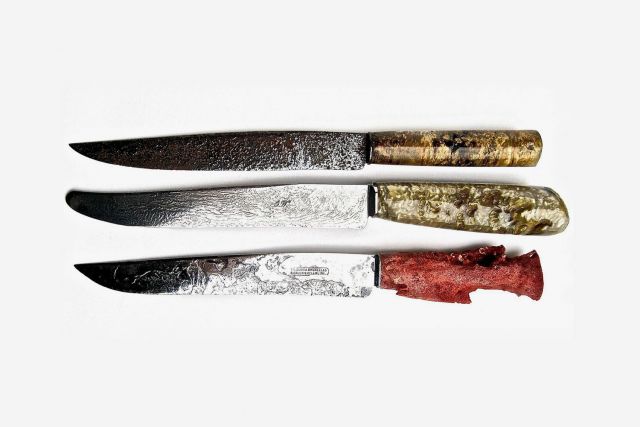
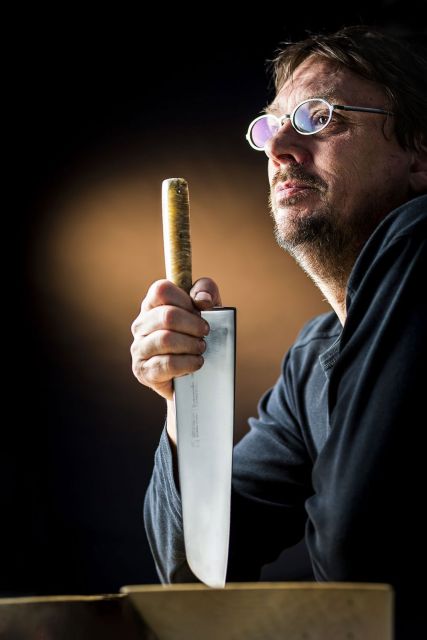
 Antoine Van Loocke_1737713.jpg.jpeg)
 Richard Haughton.jpg.jpeg)
Antoine Van Loocke
- Knifeforging Comm. V.
- Knife maker
- Oosterzele, Belgium
- Master Artisan
- Recommended by BeCraft
By appointment only
+32 474286850
From junk to gem
- • Antoine crafts custom-made knives for chefs and private clients
- • Nature inspires his ideas and supplies the raw materials for his work
- • He transforms discarded materials such as rotten wood and rusty steel
Antoine Van Loocke is a self-taught artisan who creates knives from waste. “In childhood, seeing my mother peeling potatoes, I learnt that this small kitchen knife was an important tool in our daily life.” He started making knives using a piece of train track as an anvil, a small hammer he found in a scrap container and his kitchen stove as a forge. “I just kept tinkering until I knew how to do it.” In the last 20 years he has sought out hundreds of old knives, which he cleans, forges, and polishes. He makes the handles out of natural waste materials, resulting in new and original knives with a unique design and character.
Read the full interviewWorks
Photo: © Antoine Van Loocke

Photo: © Antoine Van Loocke
The handle of this carbon steel blade is fashioned from beige geode flint, a naturally occurring material. A geode is a rounded rock with numerous distinctive hollow cavities, resembling bone or even coral.
Length 180 mm

Photo: © Antoine Van Loocke
The carbon steel blade of this knife contrasts with the iridescent mother-of-pearl and ebony handle. Carbon steel, an alloy of iron and carbon, remains sharper for longer than stainless steel, and blades made from it are normally easier to sharpen.
Length 185 mm

Photo: © Antoine Van Loocke
The carbon steel blade of this knife is embellished with a turquoise bead handle. Carbon steel, an alloy of iron and carbon, stays sharper longer than stainless steel and blades made from it are normally easier to sharpen.
Length 170 mm






